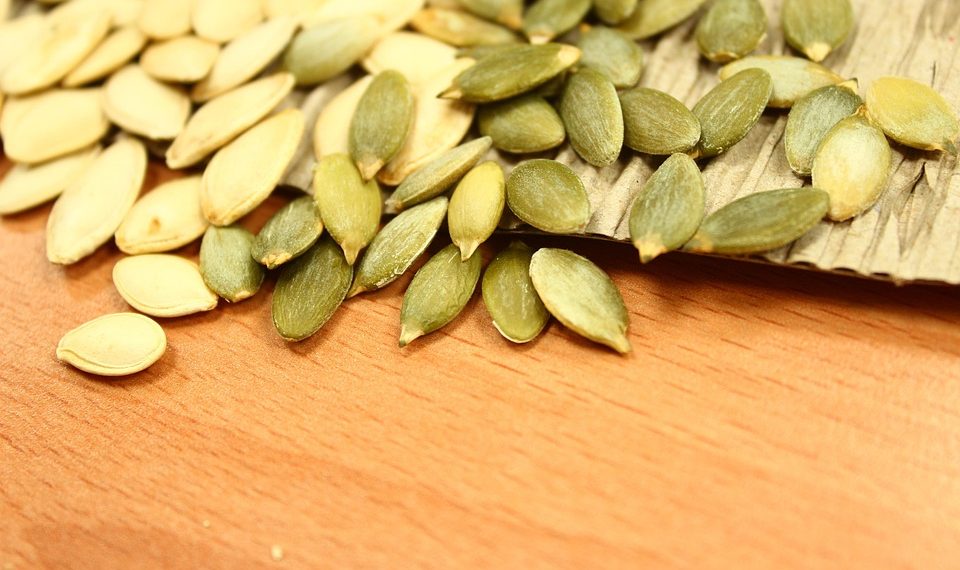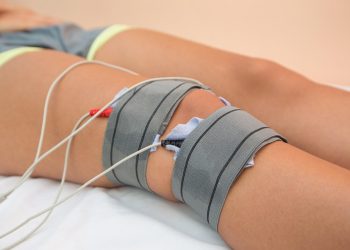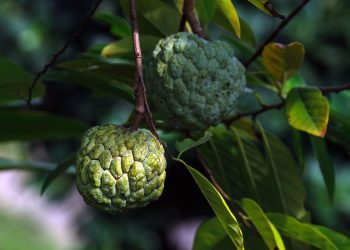Muscle soreness pumpkin seeds are a simple, powerful answer when your body aches after a hard workout. They’re tiny, crunchy, and packed with nutrients that help repair muscle, quiet inflammation, and restore energy. If you want recovery that actually works — not just promises — this is worth your attention.
Why This Matters
You push your limits, and your muscles complain. That soreness slows your training, clouds your mood, and steals momentum. Understanding how muscle soreness pumpkin seeds help gives you a low-cost, natural tool that fits in your pocket, your gym bag, or on your kitchen counter. This article walks you through seven concrete ways these seeds aid recovery, backed by science and practical tips you can use tonight.
Contents
- How Muscle Soreness Pumpkin Seeds Speed Recovery
- 1. They Feed Repair With High-Quality Protein
- 2. They Reduce Inflammation With Healthy Fats
- 3. They Pack Antioxidants That Quiet Oxidative Stress
- 4. They Supply Magnesium To Relax Muscles
- 5. They Improve Blood Flow Through Nitrates And Arginine
- 6. They Rebuild Energy With Zinc And Iron
- 7. They Support Sleep And Hormonal Balance
- Bottom Line
- FAQ
How Muscle Soreness Pumpkin Seeds Speed Recovery
Pumpkin seeds deliver protein, healthy fats, minerals, and antioxidants all in one bite. That mix supports repair, reduces oxidative stress, and helps your nerves and muscles communicate better. When you add them to a recovery routine, you’re stacking benefits that speed healing and reduce the intensity and length of muscle soreness.
1. They Feed Repair With High-Quality Protein
Protein rebuilds torn muscle fibers. Pumpkin seeds are rich in amino acids—especially tryptophan and arginine—which support repair and circulation. A handful after a workout gives a fast, satiating protein boost that complements your main recovery meal.
Research shows plant proteins can help with muscle synthesis when consumed in adequate amounts, so pumpkin seeds make a pragmatic choice for athletes and everyday movers alike. Toss them on yogurt, blend into a smoothie, or munch them straight from a jar.
2. They Reduce Inflammation With Healthy Fats
Inflammation is part of healing, but too much keeps you sore longer. The unsaturated fats in pumpkin seeds — including omega-6 and small amounts of omega-3 precursors — work with antioxidants to temper inflammation. That helps you move sooner and sleep better.
Clinical studies on dietary fats and inflammation support the idea that balanced fats, combined with other anti-inflammatory nutrients, lower markers of muscle inflammation after exercise. That means fewer stiff mornings and faster return to training.
3. They Pack Antioxidants That Quiet Oxidative Stress
After intense training, your muscles produce free radicals. Pumpkin seeds supply antioxidants like vitamin E and phenolic compounds that neutralize these radicals. Less oxidative stress means less cellular damage and lower muscle soreness.
Scientific literature shows antioxidant-rich foods reduce oxidative markers post-exercise, and vitamin E is singled out repeatedly for muscle protection. A small serving of pumpkin seeds pairs perfectly with antioxidant-rich fruits or greens for a complete recovery snack.
4. They Supply Magnesium To Relax Muscles
Magnesium is a secret weapon for sore, tight muscles. Pumpkin seeds are one of the best plant sources of magnesium — a mineral that helps muscles relax, eases cramping, and supports sleep quality.
Deficiency in magnesium is linked to prolonged muscle soreness and poor recovery. Adding pumpkin seeds to your daily routine can restore balance fast, especially if you sweat heavily during workouts or avoid dairy and whole grains.
5. They Improve Blood Flow Through Nitrates And Arginine
Better blood flow means better delivery of oxygen and nutrients to damaged tissue. Pumpkin seeds contain arginine, an amino acid that your body converts into nitric oxide — a molecule that widens blood vessels and improves circulation.
Improved circulation speeds the removal of metabolic waste from muscles and brings fresh nutrients for rebuilding. Athletes who focus on circulation strategies recover faster and perform better in back-to-back sessions.
6. They Rebuild Energy With Zinc And Iron
Repair takes energy, and iron and zinc are central to energy metabolism and immune support. Pumpkin seeds deliver both, helping your muscles rebuild without taxing your system.
When iron and zinc are low, recovery stalls. Incorporating pumpkin seeds into meals supports enzymes that repair tissue and fend off infection — practical protection for anyone training hard or dealing with chronic muscle strain.
7. They Support Sleep And Hormonal Balance
Good sleep is recovery. Pumpkin seeds contain tryptophan, which helps make serotonin and melatonin — chemicals that support restful sleep. Better sleep equals better muscle repair, reduced soreness, and mental clarity.
Sleep studies confirm the link between nutrient status, sleep quality, and recovery. A small bedtime snack with pumpkin seeds can improve sleep foundations without a heavy meal.
Practical Ways To Use Pumpkin Seeds For Recovery
– Sprinkle on salads, grain bowls, or overnight oats for an instant recovery boost.
– Blend into smoothies with banana and spinach for a magnesium-rich recovery drink.
– Make a quick trail mix with pumpkin seeds, walnuts, and dried fruit to eat within an hour after training.
– Toast with a pinch of sea salt and smoked paprika for a savory, satisfying post-workout nibble.
– Mix into homemade energy bars or protein bites for portable recovery.
Eating them consistently matters more than a single mega-dose. Aim for a daily serving — about a quarter cup — alongside other recovery habits like hydration and protein intake.
What The Science Says
Clinical nutrition studies and reviews from university researchers show that nutrient-dense seeds support muscle recovery through anti-inflammatory actions, antioxidant effects, and mineral replenishment. For example, evidence on magnesium’s role in muscle function and sleep is robust, and trials on plant proteins show real benefits for muscle synthesis when total protein intake is adequate.
If you want specific, peer-reviewed summaries, check trusted resources like university research pages and health system sites for plain-language explanations. Those resources help you understand how small dietary shifts create measurable improvements in recovery.
How To Combine Pumpkin Seeds With Other Recovery Strategies
Pumpkin seeds aren’t magic on their own. They work best when paired with proven recovery practices:
– Hydration: Rehydrate with electrolyte-rich fluids and add a seed-packed snack.
– Protein: Combine seeds with dairy, legumes, or a shake to meet post-workout protein needs.
– Sleep: Use a small seed snack at night to support sleep chemistry.
– Active recovery: Light movement and mobility work plus nutrient timing speeds healing.
This strategy is about stacking small wins. Each habit compounds, and pumpkin seeds fit easily into every step.
Allergies, Digestive Tips, And Safety
Most people tolerate pumpkin seeds well, but if you have seed allergies or digestion issues, start small. Toasting the seeds can improve flavor and digestibility. If you’re on blood thinners or have medical conditions, check with your healthcare provider because seeds can interact with certain medications or nutrients.
For maximum benefit, choose unsalted or lightly salted seeds. Too much sodium undermines recovery by promoting fluid retention and increasing blood pressure.
Bottom Line
Pumpkin seeds are a tiny, affordable recovery tool that packs protein, magnesium, antioxidants, and circulation-supporting nutrients into every bite. Whether you want to reduce inflammation, sleep better, or rebuild muscle faster, adding pumpkin seeds to your routine gives real results without drama. Make them a daily habit and pair them with smart hydration, proper protein, and rest — and watch how your recovery timeline tightens.
Be kind to your body. Eat well, move wisely, and use the simple power of pumpkin seeds to come back stronger.
References
Visual Line
These references support the recommendations above and offer further reading from reputable institutions.
References
– The National Institutes of Health explains magnesium’s role in muscle function and sleep and offers detailed information on recommended intakes (http://www.nih.gov/news/magnesium-muscle-function).
– Harvard T.H. Chan School of Public Health discusses dietary antioxidants and their effects on inflammation and recovery (http://www.hsph.harvard.edu/nutrition-source/antioxidants).
– The Cleveland Clinic provides practical advice on dietary sources of zinc and iron and their importance in recovery (http://www.clevelandclinic.org/health/articles/zinc-iron-nutrition).
– PubMed Central hosts peer-reviewed research on plant proteins and muscle synthesis for readers who want the clinical studies (http://www.ncbi.nlm.nih.gov/pmc/articles/plant-proteins-muscle).
– Mayo Clinic reviews sleep, nutrition, and recovery connections and offers evidence-based recommendations (http://www.mayoclinic.org/healthy-lifestyle/sleep-and-nutrition).
FAQ
How much pumpkin seeds should I eat for recovery?
Aim for about a quarter cup daily as a practical starting point. That gives meaningful amounts of protein, magnesium, and healthy fats without excess calories. Adjust up or down based on total calorie and protein needs.
Can pumpkin seeds replace protein shakes after workouts?
They’re a great complement, but they may not replace a concentrated protein shake if you need a large post-workout protein dose. Combine seeds with dairy, soy, or a plant-based protein to meet higher protein targets.
When should I eat pumpkin seeds for the best effect?
Timing isn’t rigid. A post-workout snack within an hour is ideal for muscle repair. A small evening serving can also support sleep and overnight recovery.
Are roasted pumpkin seeds as good as raw?
Yes, roasting preserves most benefits and often improves digestibility and flavor. Avoid heavy oils or excessive salt to keep them recovery-friendly.
Do pumpkin seeds help with chronic muscle soreness?
They can help as part of a broader plan that includes nutrition, sleep, and movement. If soreness is persistent, consult a healthcare professional to rule out underlying issues.
Get Your FREE Natural Health Guide!
Subscribe now and receive our exclusive ebook packed with natural health tips, practical wellness advice, and easy lifestyle changes — delivered straight to your inbox.















